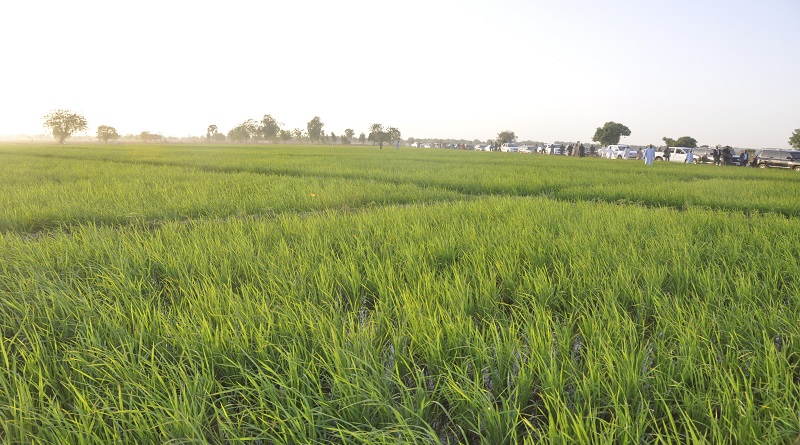How GEM technology is pushing Africa towards self-sufficiency in rice
The demand for good quality parboiled rice is high in parts of Africa, from east to west, north to south. As at 2015, rice consumption in countries was estimated to be approximately 26 million (MT) of which 13 million MT (about one-third of what is traded on the world market) was imported to the continent.
Rice consumption in Africa is projected to reach 34.9 million tons by 2025. The African Development Bank estimates that the rice sector has the potential to become an engine for economic growth across the continent.
Thus, as the demand for rice increases as result of population growth, increased per capita consumption, and a shifting preference towards ‘premium’ rice linked to increased urbanisation, Africa will need to produce approximately 13 million additional tons of premium rice per year.
Increasing rice production to meet this need is expected to improve the livelihood of at least 3 million producers and lead to economic gains of about US$5.5 billion per year among African countries. To achieve this, Africa needs to develop technologies and infrastructures to support widespread production, processing and commercial adoption of high-yielding climate-resilient rice varieties.
Until now, domestic rice is processed in Africa through the traditional parboiling process. This is carried out mainly by rural women – laborious, time-consuming and unsafe, producing low quality rice with broken and burnt grains and bad smell.
It also requires lots of firewood, causing deforestation. Another major challenge is the pollution that comes with disposing the rice husks that accumulate after threshing.
A GEM for rice parboilers
To address these challenges, the rice compact of Technologies for African Agricultural Transformation (TAAT) is deploying an innovative and environmentally friendly parboiling system — called GEM (Grain quality enhancer, Energy-efficient and durable Material).
Sponsored by the African Development Bank as part of its Feed Africa Initiative, TAAT’s main objective is to improve the business of agriculture across Africa by raising agricultural productivity, mitigating risks and promoting diversification and processing in 18 agricultural value chains within eight priority intervention areas.
The programme increases agricultural productivity through the deployment of proven and high-performance agricultural technologies at scale along selected nine commodity compacts which include rice.
Led by the Africa Rice Center (AfricaRice), the TAAT Rice Compact (TRC) seeks to achieve rapid intensification of rice production by raising farm-level productivity and improving the efficiency of processing and increasing market opportunities through innovative partnerships and proven technologies.
One of such is the GEM technology. Compared with the traditional technology, GEM produces rice of high physical and eating quality that fetches higher price on the local market. It was designed by AfricaRice and fabricated through partnerships with the private sector. The system is provided with pulleys that reduces drudgery.
The improved system protects the women processors from heat and smoke exposure. It further enables them to process large quantities of paddy rice in a relatively short time. It also includes an eco-friendly stove with a solar-powered fan that runs on rice husk — a free and abundant fuel in rice-producing areas.
A profitable technology
The use of the GEM technology reduces paddy steaming time from 60 to 20 min, post-harvest losses from 6% to <0.5% and firewood consumption by 41-100%.
The substitution of firewood fuel by the rice husk results in US$30 savings per ton of parboiled rice. Milled parboiled rice has a higher content of B-Vitamins, minerals and demonstrates slower digestive and lower glycemic properties compared to white milled rice. Biochar produced from the burnt rice husk is used to improve soil fertility.
With the installation of the GEM system, Bouake Innovation Platform (IP) in Côte d’Ivoire is now supplying 4.4 tons of milled parboiled rice per month to the market. In collaboration with PAFER (NGO) and an equipment fabricator (TCMS) in Benin, six mini GEM rice parboilers costing CFA 19.5 million (about US$35,454) were installed in communities in Glazoué and Malanville rice hubs in Benin.
From April 2018 to June 2020, 2,255 tons of paddy were processed into 1,600 tons of milled rice. This system completely substituted firewood with rice husk leading to about US$38,300 savings across the IP sites.
Using the rice husk-fueled GEM rice parboiling system by the IP in Bukan-Sidi Lafia, Nasarawa state in north-central Nigeria for example, over 65 million Naira (US$181,800) was generated within one year (2019) from selling 218.15 tonnes of quality domestic parboiled rice.
A total of 68,300 parboiled rice value chain actors (paddy suppliers, service providers, rice marketers and rice consumers) have so far benefited from the GEM rice parboiling system in Benin, Côte d’Ivoire, Niger and Nigeria.
“Before the installation of the rice husk stove in our centre, we were spending a lot of money on firewood. But today, we can save that money. It increases our gains and saves the environment. It has really changed my life,” Juliet Ogbonikan a rice processor in Glazoué, Benin Republic said.
The IP in Nigeria confirmed that their production output for parboiling hit 4.4 t/day upon adoption of the GEM technology. A significant increase from the previous parboiling rate of 1.4 t/day.
“Our processing center now serves as a market hub and my paddy is no longer sold to middlemen since the IP is directly linked to market. Now, the IP members process their paddy before selling, using the IP-fixed price, which is 7-10% above the open market price; thus, maximizing profit by adding value to the paddy harvested,” Joshua Jonathan added.
According to Dr. Ernest Asiedu, the TAAT Rice Compact Leader, the significant improvement recorded with the introduction of the GEM technology aligns essentially with the compact’s vision of reaching over 2.26 million beneficiaries, 30% of whom will be women, using productivity enhancing technologies and innovations in the rice value chain across 20 African countries.
“The compact will continue on this pathway of expanding access of smallholder farmers to high-yielding agricultural technologies and improving rice production as a means of assuring food security and sufficiency in rice for Africa,” Dr. Asiedu added.




